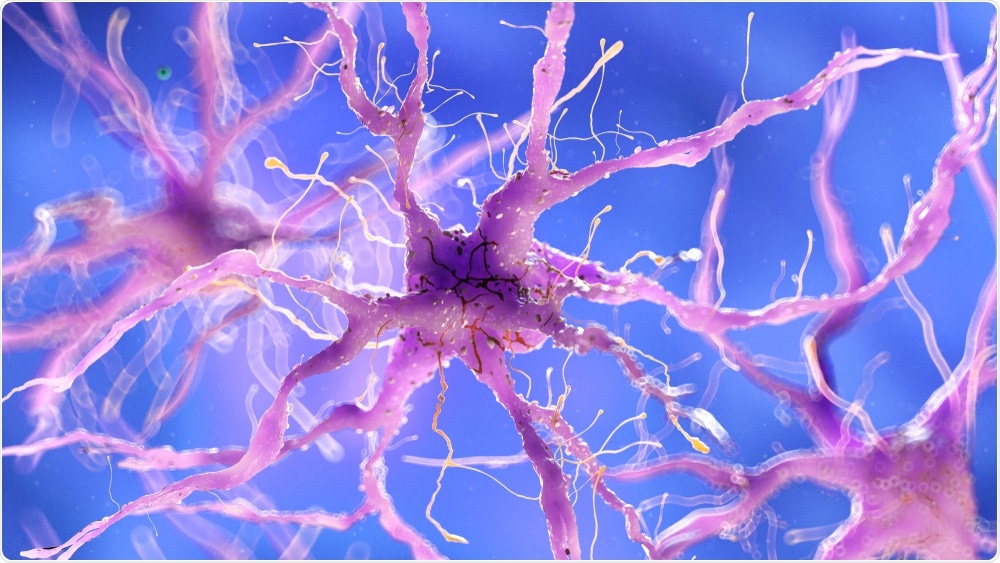Jan 22 2020
Researchers at the University of Pittsburgh School of Medicine have created a biodegradable, implantable tube or “nerve guide” that can repair damage to major nerves in cases of traumatic injury.

Image Credit: Sebastian Kaulitzki/Shutterstock.com
The porous, flexible tube is filled with growth-promoting proteins that can regenerate long stretches of damaged peripheral nerves, without the need to isolate stem cells or another nerve from the patient.
We’ve created a biodegradable, porous tube. It’s very flexible and in the walls of this nerve guide we can embed small particles that have encapsulated different drugs that result in a very slow, controlled release of the drug over a few months,”
Kacey Marra, Professor of plastic surgery at Pitt
When a traumatic injury causes a gap in one of the major nerves in the brain and spinal cord, the nerve does not re-grow like nerves in cases of a paper cut, for example, or even a surface knife wound.
Now, Marra reports: "We're the first to show a nerve guide without any cells was able to bridge a large, two-inch gap between the nerve stump and its target muscle. Our guide was comparable to, and in some ways better than, a nerve graft."
The technology, which has so far only been tested in monkeys, has recently been described in the journal Science Translational Medicine.
The need for nerve-regenerating technologies
Around half of the American soldiers return to the United States with significant traumatic injury to their limbs because they are not adequately protected by armor. This often means soldiers suffer from major nerve damage, resulting in disability.
Approximately 20 million American civilians also sustain significant nerve damage as a result of car accidents, handling dangerous machinery, cancer treatments, diabetes, and birth trauma.
A peripheral nerve can regenerate up to one-third-of-an-inch of a gap by itself, but if the damage extends beyond that, it is unable to locate its target muscle and often forms a painful ball called a neuroma. Currently, the most common approach to treating longer stretches of damage is to remove a sensory nerve from the back of the leg, cut it into thirds, bunch the segments together and attach them to the end of the damaged nerve.
However, this approach usually only results in the nerve recovering about 40 to 60% of its function.
“It's like you're replacing a piece of linguini with a bundle of angel hair pasta. It just doesn't work as well,” says Marra.
What was different about the technology that Marra developed?
The nerve guide recovered around 80% of fine motor control in the thumbs of monkeys that had had their nerves severed to create a two-inch nerve gap in the forearm.
The biodegradable tube is composed of the same material used in dissolvable sutures and the growth-promoting protein filling the walls of the guide is the same one that was used in a recent Parkinson’s trial.
“We’ve tried over ten different drugs in the past 15 years in this nerve guide. The one that worked best is glial cell-line drive neurotrophic factor (GNF) and this protein is secreted by your cells,” says Marra. “It’s upregulated when there’s a nerve injury and that protein then acts as a beacon to call the patient’s cells into the nerve guide, which, in turn, helps the nerve to regrow across the gap.”
The team tested the nerve guide in monkeys with severed nerves and compared the results with those seen when a nerve graft and an empty polymer tube (control groups) were used.
Given the short length of monkeys’ legs, a sensory nerve from the leg could not be removed, cut and bundled, as would be usual clinical practice. Instead, the team took a two-inch segment from a nerve in the forearm and then sewed it back into place.
“We trained the animals to pinch a banana pellet using only their forefinger and thumb. Then, after severing the nerve and replacing it with one of our treatment groups, the animals initially could not retrieve the pellets,” reports Marra.
“What we found was, after a year, our nerve guide with the protein was able to generate the two-inch gap and return to function was about 78%. After about 30 weeks, we saw a significantly improved recovery as the animals got better and better at being able to retrieve the pellets.”
Marra’s nerve guide was just as effective as the best-case-scenario graft and even outperformed that, once it came to restoring nerve conduction and regenerating Schwann cells (which insulate nerves and boost electrical signals). The empty guide was significantly less effective on all counts.
Clinical trials may be next
After the promising effects observed in the monkey model, Marra now wants to test the technology in patients, especially given the advantages it offers over other treatments that have been developed.
There’s been a lot of research over the past several decades using stem cells and other treatments in animal models. However, this technology that we’ve developed is going to be easier to translate clinically because it is simply off-the-shelf. You can pull the guide out of the refrigerator and implant it into your patient, without needing to isolate stem cells or isolate another nerve from the patient… Now that we’ve established efficacy in both small and large animal models, we look forward to examining the technology in a first-in-human clinical trial.”
Marra is currently working on this with the Food and Drug Administration (FDA):
"There are no hollow tubes on the market that are approved by the FDA for nerve gaps greater than an inch. Once you get past that, no off-the-shelf tube has been shown to work," Marra says. "That's what's amazing here."
Source:
Researchers regrow damaged nerves with polymer and protein. EurekAlert! 2020. Available at: https://www.eurekalert.org/emb_releases/2020-01/uop-rrd011720.php